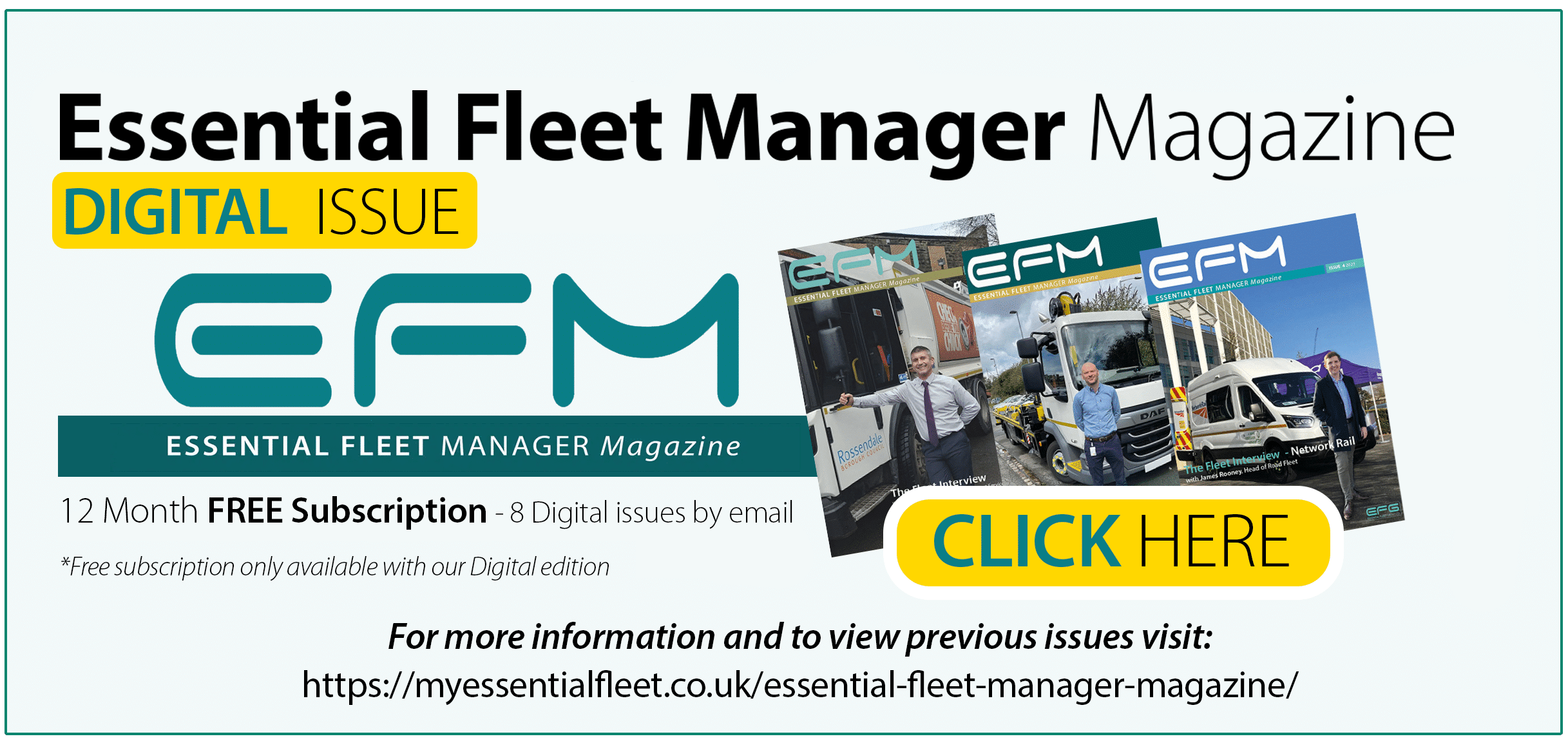All fleet operators face the inevitable prospect of VOR time. The larger and more diverse the fleet, the more complex the issue and across the Public Sector and Essential Services, unplanned downtime may have a serious impact on service delivery and vital repairs to the infrastructure.
Planned downtime for regular vehicle maintenance or servicing can be managed, but what are the causes of the unplanned events and how can they be minimised?
Road Traffic Incidents
No Fleet Manager can plan for an accident, but steps can be taken to reduce the chances and risk of a damaging incident. Assuming that a vehicle is well maintained, the solution lies with Driver Training and education. Drivers who are taught techniques in safe and efficient driving styles will subject vehicles to less wear and tear, obvious issues being the extra wear on brakes and tyres resulting from aggressive driving. They will also be less inclined to take risks that can lead to serious collisions.
Not only is there a wide variety of highly professional training organisations but once this has taken place, reward systems can be put in place via vehicle telematics. As well as highlighting problem drivers, safe drivers can also be identified through the use of data and a culture of “driving excellence” can be created. This will have a positive effect on vehicle downtime and across several other important issues. The same reward system will also act as a catalyst to improving driving behaviour where there is an issue.
Drivers also need to conduct daily pre-use checks on vehicles. This is a vital safety requirement and will identify any concerns with the vehicle that may lead to an incident on the road or unplanned maintenance. Apps are available that not only provide real-time reporting during pre-use checks but also prove that the check is being carried out.
Vehicle Wear & Tear
Any good Fleet Manager will have systems in place for maintenance scheduling and will also have a reasonable expectation as to what constitutes fair wear and tear. Of course, this is vital in ensuring that unexpected end-of-life costs are avoided, but it will also help identify if the demands on the vehicle have changed. For example, during a regular check, cosmetic damage may be noticed. This may not seem serious at the time but might indicate that extra demands are being placed on the vehicle and if not addressed, this can develop into serious damage, leading to the vehicle being off the road. It is therefore essential to identify the cause of all types of damage and establish if they are likely to become part of a pattern.
It is also important to have processes in place those unforeseen incidents that are extremely difficult to plan for, such as discovering tyre damage that is not part of expected wear and tear. The best tyre suppliers that may be engaged directly or be a partner to your fleet management provider, will have systems to mitigate the disruption and attend as quickly as possible.
Another example is key loss or failure. In these situations, an otherwise sound vehicle will be off the road for as long as it takes to replace the key. If these situations are treated as and when they arise, fleet managers may have to resort to costly and time-consuming solutions with a main dealer. There are mobile services that will attend to the affected vehicle at its location and by use of technology, create duplicate keys in the shortest possible time, very much minimising the impact of any key loss or failure.
New Vehicle Specification
Fleet Managers could be forgiven for thinking that ordering replacement vehicles, at the right cost from a good supplier and all in plenty of time to take over from those being de-fleeted, is a job well done! However, whilst that is all very important, it is also critical to review the role of each asset. Contract requirements change and it is not always sufficient to order the same vehicle, with the same specification or payload.
A more demanding application can lead to extra strain on the vehicle, consequent damage with the inevitable downtime or even issues surrounding overloading. Even if the vehicle application is principally the same, there may be an innovative piece of on-board equipment that may help reduce wear and tear and consequently reduce the risk of unforeseen downtime. It is also important to replace vehicles at the right time. If they have been outright purchased, their value will be written down over a period of time. However, if a vehicle develops issues that often take it off the road, it may be worth considering an early replacement. Although there may be an extra cost associated with the early capital outlay, it may well avoid far greater costs that result from frequent vehicle downtime.
Prevention
Rigorous SMR processes are essential. Although planned maintenance or servicing will inevitably take a vehicle off the road, they can be carried out at times of low demand on the vehicle, such as evenings or weekends. Mobile servicing units can also greatly assist with reducing downtime. Major LCV OEMs, through their dealer chains, are now expanding the availability of mobile servicing which is a great addition to other services. When this is not an option, choosing a garage network with multiple sites near your operational areas will also be of great benefit.
Action
When the Fleet Manager employs technology and communicates effectively with drivers, the most important thing is to act on the information. This will lead to the application of solutions that will prevent unplanned downtime and promote a safe and efficient fleet culture.
Fleet Managers must also develop a collaborative relationship with suppliers if not already doing so. This means that any new services can be considered and implemented where appropriate as quickly as possible and with maximum support. It is also important to stay informed of developments at suppliers not currently being utilised and consequently be aware of as many services that help as possible.
Future Opportunities
Many fleet operators are well on the way to embracing the opportunities presented by electric vehicles. Where it is cost-effective and practical to replace an ICE van with an EV there are not only the huge environmental benefits, but also the prospect of very much simplified maintenance schedules and much lower risk of vehicles developing faults. This results from the relatively low number of moving parts and an EV is, in engineering terms, far less complex than ICE counterparts.
Although issues with EVs are less frequent than those with ICEs, the skill base within the vehicle maintenance and repair sector of EVs must increase in line with the sharp increase in EV adoption, so that it doesn’t impact servicing requirements. The move towards fleet electrification also throws up issues with vehicles being ‘ready to work’ in other words, fully charged. Charging can be complex and managing it is becoming to be an increasingly intensive task within fleet management.
This article was published in Issue 5 of Essential Fleet Manager – read it here





